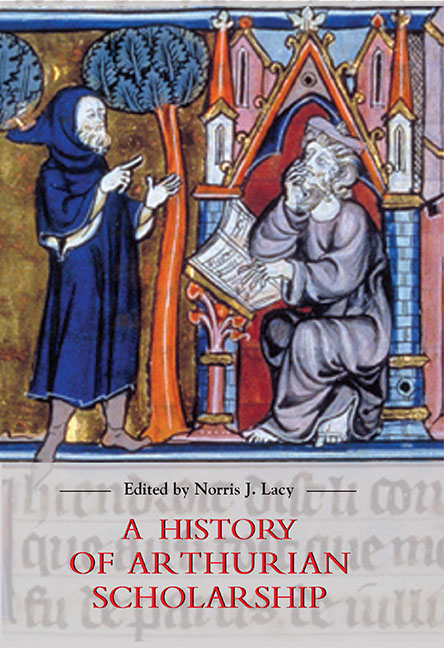Early Arthurian Art
Published online by Cambridge University Press: 18 March 2023
Summary
Critical attention to Arthurian art and artifacts of the Middle Ages and Renaissance began as an antiquarian and archaeological interest. In 1540 the English antiquary John Leland, seeking proofs of King Arthur's existence, visited the tomb at Glastonbury and the Round Table at Winchester. A few years later William Camden made similar journeys, described in Britannia (1586), which included an account of the tomb's discovery. The English translation reproduced life-size Camden's drawing of the inscribed cross with critical comments:
On the upperface (of theGrave stone) was fasteneda broad crosse of lead grossly wrought:whichbeingtaken forthshewedaninscription … which Inscriptionof lettersor Epitaph … I thought good for theantiquitie of the characters here to put downe. The letters being made after a barbarous maner and resembling the Gothish character, beuray plainly the barbarism of that age, when ignorance (as it were) by fatall destinee bare such sway, that there was none to be found, by whose writings the renowne of Arthur might be blazed.
The anti-Gothic prejudices of the seventeenth and eighteenth centuries disappeared in the flourish of Victorian medievalism. The architectural writings of A.W.N. Pugin and John Ruskin, the repossession of the Arthurian legends as a national myth and the cult of chivalry in England encouraged casting an interested eye on medieval art and architecture, as did the writings and reconstructions of Viollet-Le-Duc in France. German Romanticism had already anticipated the view of the medieval period as a Golden Age of faith, order and heroic action.
Retrieving the past necessarily presents problems of cultural difference. If a modern critic is to interpret and evaluate works produced centuries earlier, account must be taken not only of political and social history but also of religious beliefs as promulgated predominantly by the Roman Catholic Church. Chivalric literature and the art that it inspired were not intended solely as entertainment but as a source of social, moral and spiritual instruction relevant to contemporary society. The romance writer creates an ethical/chivalric world that is played against ‘a real world that has fallen away from old ideals and must be inspired by fictively generated norms of rectitude’.
- Type
- Chapter
- Information
- A History of Arthurian Scholarship , pp. 198 - 219Publisher: Boydell & BrewerPrint publication year: 2006



